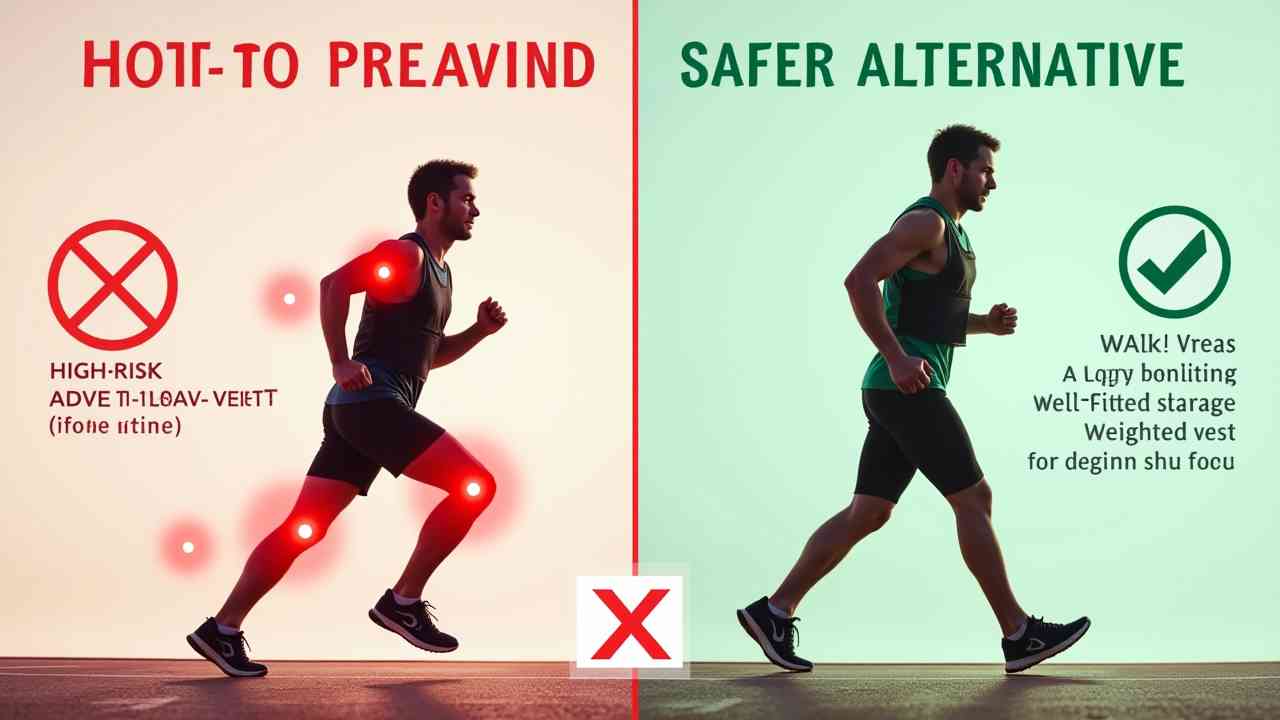
🔥 Jogging with a Weighted Vest: A Guide to the Pros and Serious Risks
🔥 A Trainer's Guide to Jogging with a Weighted Vest (Pros vs. Risks) 🔥
❗ CRITICAL FITNESS & SAFETY WARNING: Jogging with a weighted vest is an advanced training technique that carries a significant risk of injury. It is NOT recommended for beginner runners or anyone with a history of joint or back problems. You must consult with a doctor or a physical therapist before attempting this. This guide is for informational purposes only.
You are looking for a way to make your workouts more intense. You want to burn more calories and build more strength. This might lead you to consider jogging with a weighted vest. It seems like a simple way to level up your run. But is it a smart idea, or is it a fast track to an injury?
The answer is that it is a high-risk, high-reward tool. This guide will break down the potential benefits and the serious risks. ✅
🤔 What Are the Potential Benefits?
The logic is simple: carrying more weight requires more energy. This is why advanced athletes use it. The main benefits are:
- Increased Calorie Burn: Your body has to work much harder to move the extra weight, which can significantly increase the number of calories you burn per mile.
- Cardiovascular Boost: Your heart and lungs have to work harder to supply your muscles with oxygen, which can improve your overall cardiovascular endurance.
- Builds Bone Density: As a high-impact, weight-bearing exercise, it can help to strengthen your bones.
- Strengthens Muscles: It adds resistance to your run, which can help to build more power and strength in your legs, hips, and core.
⚠️ What Are the Serious Risks? (The Cons)
This is the most important part of the conversation. For the average person, the risks of jogging with a weighted vest often outweigh the benefits. The potential for injury is very high.
1. Why is it so bad for your joints?
This is the #1 danger. Jogging is already a high-impact activity. When you add 10, 15, or 20 extra pounds, you are dramatically increasing the impact force that slams into your joints with every single step. This puts immense stress on your ankles, knees, hips, and lower back, and can easily lead to stress fractures or joint damage.
2. How does it ruin your running form?
The extra weight can throw off your natural running mechanics. It often causes you to lean too far forward to compensate for the weight on your back. This can destroy your posture and lead to new injuries in your back, neck, and shoulders.
- How Can You Do This Safely? (The 3 Golden Rules)
If you are an experienced runner with a strong foundation and no history of injuries, and you still want to try, you must follow these rules.
1. Start with WALKING. This is the most crucial rule. Do not run. Start by walking with a light vest. Do this for several weeks to allow your joints and tendons to adapt. This is the safest way to build up strength.
2. Start Incredibly Light. Do not start with a 20-pound vest. Your first vest should be no more than 5-10% of your body weight. A 150-pound person should start with a 7.5 to 15-pound vest, maximum.
3. Focus on Form. The vest must be snug to your body. It should not bounce or shift. Focus on keeping your chest up and your core engaged. If your form starts to suffer, you are doing too much.
⭐ What's the Bottom Line?
For 99% of people, jogging with a weighted vest is an unnecessary risk. There are much safer ways to increase the intensity of your run. Running up hills or doing short, fast sprint intervals are far more effective and safer for your joints.
The cool autumn air is perfect for running. Do not ruin the season by trying an advanced technique that your body is not ready for. 🍂